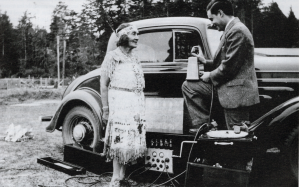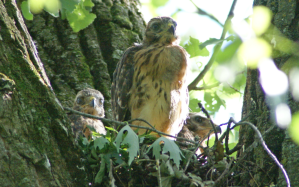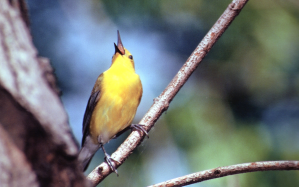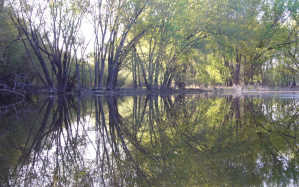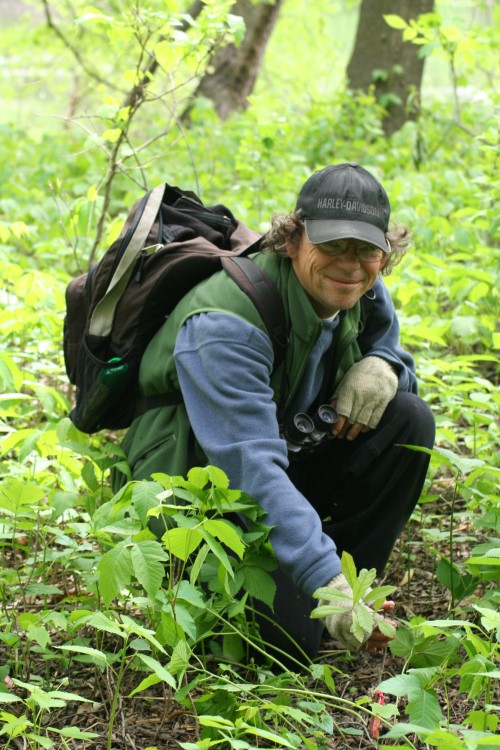4-26-2022
Dear Tara L. Krista,
Please, forward this ecological info to the environmental assessment team for the Great River Trail Extension of the Flyway Trail. I have bicycled and observed nature along the proposed route since 1979. I have monitored bird populations for the Upper Mississippi River National Wildlife and Fish Refuge and conducted Breeding Bird Censuses in association with the Cornell Laboratory of Ornithology and American Association of Field Ornithologists. I conducted a 1998 breeding bird study of the Aghaming acreage downriver from the cement road that is now the Flyway Trail Connecter, have documented red-shouldered hawk nests in the Aghaming acreage since 1994. I currently document red-headed woodpecker nests at Trempealeau Refuge in association with the Red-headed Woodpecker Recovery Program. Etc. See https://richieswanson.com/bird-conservation/.
I also traveled by bicycle throughout North American 1977-2006.
A list of my concerns:
INVASIVE THISTLE
An invasive thistle grows and forms a monoculture on the borders of the Flyway Trail Connector at both the south and north end of the new bridge above the railroad tracks. The thistle grows in dense patches along the new bicycle trail to Bluff Siding Park, and will also establish itself along the disturbed borders on the proposed Great River Trail Extension. If the thistle remains uncontrolled, its occurrence will increase beyond the Marshland entrance and displace butterfly milkweed and other native plants along the banks of the Great River State Park Trail and in the sand prairie.
Unfortunately the City of Winona mows the borders of Flyway Trail Connector with a machine that also destroys saplings. Though this may be outside the jurisdiction of your assessment, the mowing encourages the thistle and also garlic mustard and facilitates the spread of invasive species along the Flyway Trail. The surface of the Flyway Trail Connector is two full auto lanes without a mowed edge. Environmental citizens have continually raised this issue with the City of Winona to no avail. I encourage Great River Trail Extension planners to work with the city to coordinate a mowing policy that discourages invasive species.
WILDLIFE SPECIES AT RISK IN TREMPEALEAU REFUGE AND OTHER WETLANDS ADJACENT TO THE EXISTING AND PROPOSED TRAIL. LOSS OF BUFFER STRIPS OF TREES/SHRUBS AND VISUAL SHIELDS.
I bicycled the existing trail between the Great River Road and refuge wetlands 4-23-22. I flushed/disturbed/displaced hundreds of waterfowl where no visual shield and buffer strip of shrubs exist between the trail and wetlands. I did not stop, I disturbed the avian life from its crucial stopover site merely by pedaling past at sunrise. Flocks of teal, gadwall, shovelers, mallards, wood ducks etc. flew hundreds of meters from where they’d previously been feeding and loafing.
Black terns (Wisconsin-endangered) and great egrets (Wisconsin-threatened) use the wetlands beside the Great River Trail Extension during migratory and breeding periods. The first trumpeter swans (2019) known to breed successfully at Trempealeau Refuge since the species was reintroduced in Wisconsin in 1989 nested and continue to use the habitat opposite the Wisconsin State Wayside. A pair of trumpeters have also appeared continually this spring in Aghaming wetlands on the south side of the Flyway Trail Connector. These species represent a small fraction of the bird species dependent upon the upper Mississippi River Flyway.
Birds are struggling to maintain their populations in North America. Abundance has declined by 29% since 1970, according to Science October 2019, Decline of the North American avifauna. Preliminary trail construction has eliminated buffers of shrubs and visual shields for submerged and emergent aquatics, habitat for waterfowl, rails, long-legged waders as well as Neotropical breeders (e.g. willow flycatchers, common yellowthroats, yellow and prothonotary warblers). Trail use reduces the undisturbed areas used by wildlife in general, by such rapidly disappearing species as Forster’s and Caspian Terns (both Wisconsin-endangered).
The elevation of the trail makes the human activity appear larger, the speed and shadows of bicyclists increase the appearance of the threat. I encourage Great River Trail Extension planners to commit funds to creating strips of buffer vegetation and visual shields NOW, to budget for conservation at the same time as construction.
Keep the trail users on the trail, out of buffer zones and wetlands. Direct them to existing observation platforms and foot trails for closer looks at nature.
RUN-OFF
Heavy rains create dangerous ruts in the trail and cause sand and gravel to spill down dikes and hillsides into the wetlands below, into a river system already overloaded with sediments. I assume trail planners will correct this design flaw. Strips of buffer vegetation and trail-border plantings may also help mitigate the run-off.
POLLINATOR PLANTS
The bicycle trails in question have displaced or will displace pollinator plants. I casually identified flowering plants along the route June 28, 2020. Butterfly milkweed, St. Johns-wort, yarrow, goats-beard, mullein, Erigeron strigosus, spiderwort, and the exotics bladder campion, bouncing bet, chicory, yellow and white clover, Queen Anne’s lace. Tail-border plantings can help mitigate the loss of pollinator plants and also improve the number of native species.
EXTRA DISTURBANCE IN A ROADKILL ZONE
Blanding’s turtles use refuge habitat near the Marshland entrance. The Great River Trail Extension will provide them a natural corridor to the death zone of Highway 35/54. It will invite them to lay eggs in the sandy borders of the both the trail and highway, will increase reproductive failures. The trail will also provide a natural corridor for predators e.g. red fox, coyotes, raccoons to turtle nests. The trail will provide a corridor for other wildlife to the death zone.
I recorded wildlife species dead on Highway 35 adjacent to the existing and proposed trail as I bicycled to monitor red-headed woodpecker nests at Trempealeau Refuge, May 21, 2020 to July 19, 2020. The list below does not represent a comprehensive count, but includes only wildlife species viewed casually from a bicycle from 44.07143, -91.62249 to 44.07156, -91.55515.
Bird species: American robin, red-winged blackbird, song sparrow, blue jay, brown thrasher, indigo bunting, great-crested flycatcher, yellow warbler, gray catbird, Baltimore oriole, European starling, green heron, tree swallow, rose-breasted grosbeak, blue-gray gnatcatcher, American goldfinch, Empidonax flycatcher, hairy woodpecker.
Mammals: white-tailed deer, opossum and litter, raccoons (beaver, mink, gray squirrels during other years).
Insects: Monarch butterflies, sulfur-winged butterflies, other butterflies, unidentified dragonflies.
Reptiles/Amphibians: Snapping turtle and eggs, Western painted turtle, unidentified turtles, leopard frog, fox snake.
E-BIKES
Though the bicycle industry promotes itself as stewards and conservationists, the boom of e-bikes has guaranteed that the Flyway Trail will become another corridor for motorized traffic. The boom of balloon tires has facilitated the disturbance of bicyclists in sensitive habitats that are off-road and off-trail. E-bikers already illegally ride trails and habitat closed to bikes at Trempealeau Refuge. The speed of e-bikes also endangers pedestrians and bicyclists unprepared for the suddenness of their approach.
I encourage trail planners and administrators to tackle e-bike hazards and disturbance head-on, to create and post clear rules for e-bikes, even though law enforcement may remain scarce on the Flyway Trail and at Trempealeau Refuge. Clear signage will at least allow law-biding e-bikers to act responsibly.
FUNDING PRIORITY: HONOR THE NAME “FLYWAY”
Euro-American culture has a long history of usurping names for places and diminishing native life of the locations. The development of Winona and Red Wing involved displacing the Dakota. The development of the Chippewa River watershed involved displacing the Chippewa and other tribes. The Flyway Trail should not do the same, should not diminish wildlife dependent upon the migration corridor. Don’t falsely educate future generations. Don’t pitch recreational development as synonymous with conservation. Audubon recognizes the Upper Miss Refuge and Trempealeau Refuge as an Important Bird Area and lists “recreational use, disturbance and development” as threats.
Designate/recommend an equal budget for species inventories, habitat assessment and species protection and habitat protection and enhancement as for construction and maintenance of recreational access.
Sincerely,
Richie Swanson
RichieSwanson.com


